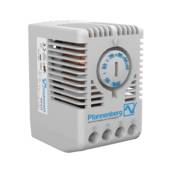An EV charging network is an infrastructure system of charging stations to recharge electric vehicles such as e-scooters, e-cars or e-buses. Many governments, automotive manufacturers, and charging infrastructure providers are creating networks.
While the process of charging an EV may not be as fast as filling a tank of gas (yet!), it’s becoming easier and faster than ever thanks to fast chargers.
Typical 22 kW charging solutions provide AC power and deliver enough energy for a further 200 km in around 120 minutes, making
it ideal for the vehicle parked all day while its owner is at work. However, reducing the 200 km charging time to 16 minutes requires recourse to a 150 kW DC fast charging station. At 350 kW, the same amount of charge can be provided in - close to the time spent today at a gas station – around 7 minutes. These faster charging times also rely on the vehicle’s battery supporting such charging approaches. At this power level, and to avoid overheating, effective and improved thermal management is needed as the temperature can increase to more than 270°C during a 10-minute fast charge.
Natural air convection
Most charging stations have a closed design to prevent internal components from being eroded by steam or influenced by the environment. It is, therefore, easy to accumulate heat during charging. The most common way to cool the charging station is through passive air cooling using PFA exhaust filters to remove the extra heat from the charging equipment cabinet. Due to their powerful airflow, Pfannenberg exhaust filters can provide a stable air volume to avoid malfunction.
Our IP 55 fluted filter mats are easily replaceable while offering extended service and increased operational safety.
Active air cooling
Where the air is contaminated with dust and sand, filterfans provide reliable cooling for the control units. Thanks to their patented fluted filter mat, they achieve IP 55 protection and longer product life. Flow-optimised fins and rotor blades allow for maximum airflow.
Some customers have chosen to equip their EV charging stations with PFH compact fan heaters with integrated thermostats or separate control devices like thermostats or hygrostats so that they can also handle too low temperatures or excess humidity, which could damage electrical components as much as excess heat.
Liquid cooling for cables and power system
As electricity flows from the charging station through the charging cables, internal resistances to the higher currents are responsible for generating high amounts of heat. Achieving reduced charging time objectives requires more durable and cooled cables, while increasing power output and circuit density in electronic systems has required more modern and effective ways of dissipating heat.
Active water cooling is the best thermal management method to remove heat from the charging cables.
Cables are liquid-cooled by a chiller and use separate cooling loops for the cable and connector of EV power systems.
Statistics and trends
Aug 2022. The global electric vehicle charging infrastructure market size is expected to reach USD 217.06 billion by 2030, growing at a CAGR of 30.6% from 2022 to 2030. (source ResearchAndMarkets.com).
The demand for electric vehicles has been growing in line with the rising awareness about environmental sustainability and the stringent limits several governments are putting on vehicular emissions.
While private companies are focusing on developing innovative electric vehicle chargers and electric vehicle charging stations, governments are collaborating with these companies for rolling out Electric Vehicle Charging Infrastructure. The fast charger segment is anticipated to emerge as the fastest-growing segment over the forecast period owing to the ability to rapidly charge electric vehicles in lesser time compared to conventional AC chargers is the primary factor driving the demand for fast DC chargers.






